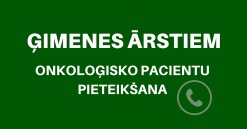L.Vīksna, A.Majore, A.Krūmiņa, V.Sondore. Infekcijas slimības. - Medicīnas apgāds, Rīga, 2011, 590 lp.
http://medicinasapgads.lv/home.php?menu=2&submenu=0
Grāmatas kopsavilkums
Grāmata konstruktīvā un lakoniskā veidā sniedz svarīgāko informāciju par biežāk sastopamajām un svarīgākajām infekcijas slimībām visos ar tām saistītos pamataspektos.
Pirmajā daļā aprakstīti tie infektoloģijas jautājumi, kas ir maz pieejami medicīnas literatūrā latviešu valodā, piemēram, nozokomiālā infekcija, infekcijas un parazitāro slimību laboratoriskā diagnostika u. c.
Otrā, speciālā daļa, ietver definīcijas, informāciju par konkrētām slimībām, to attīstības pamatmehānismiem, diagnostikas un ārstēšanas principus, kā arī epidemioloģijas jautājumus un profilakses pamatnostādnes. Grāmatas speciālajā daļā materiāls ir izkārtots balstoties uz slimības ierosinātāja piederību konkrētai ierosinātāju grupai - bakteriālās, virusālās, parazitārās, sēnīšu, vienšūņu u. c., sakārtojot tās alfabēta kārtībā.
Trešā grāmatas daļa izkārtota tabulu veidā. Katrai slimībai veltīta viena tabula, tās izkārtotas tādā secībā, kādā slimības ir uzskaitītas Desmitajā Starptautiskajā slimību klasifikatorā (SSR-10). Tabulās norādīts kādā veidā, kādā materiālā, ar kādām diagnostikas metodēm un cik ilgā vai īsā laikā nosakāms infekciju slimības ierosinātājs vai antivielas pret to.
L.Viksna, V.Sondore, J.Keiss, A.Jeruma, P.Prieditis, I.Strumfa, A.Sochnevs, B.Rozentale. Noninvasive alternatives to liver biopsy. - Liver Biopsy (ed. Hirokazu Takahashi), In-Tech, (full chapter 12), 2011, pp.181-202.
http:/www.intechopen.com/articles/show/title/noninvasive-alternatives-to-live…
Mironova S, Pimkina E, Kontsevaya I, Nikolayevskyy V, Balabanova Y, Skenders G, Kummik T, Drobniewski F. Performance of the GenoType(®) MTBDRPlus assay in routine settings: a multicenter study. Eur J Clin Microbiol Infect Dis. 2011 Oct 25
http://www.ncbi.nlm.nih.gov/pubmed/22037774
Kopsavilkums
Former Soviet Union countries including the Baltic States (Latvia, Lithuania, and Estonia) are hot spots for an emerging epidemic of drug resistant tuberculosis (TB). As a part of the development of a co-ordinated network of centers for diagnostic trials across Eastern Europe we conducted a retrospective multicenter analysis of the performance of the GenoType® MTBDRPlus assay for TB identification and susceptibility to isoniazid (INH) and rifampicin (RIF) in routine settings. A total of 1,045 primary samples, 1045 TB cultures derived from these specimens and 306 separate M. tuberculosis isolates tested in 2007-2010 at four participating sites (Tartu, Estonia; Riga, Latvia; Vilnius, Lithuania; and Samara, Russian Federation) were included in the analysis. The pooled sensitivity and specificity values for RIF and INH were 95.3% and 95.5%, 89.9 and 87.1%, respectively; there were no statistically significant variations in performance across sites. The proportion of multidrug resistant (MDR) strains in the collections ranged from 21.8% (in Estonia) to 55.9% (in Russia). In a routine non-trial context, the assay reliably detected both rifampicin and isoniazid resistance. The absence of statistically significant differences between sites suggested that the comparable performance obtained using these assays has helped demonstrate the formation of a successful diagnostic trial network.
Skenders GK, Holtz TH, Riekstina V, Leimane V. Implementation of the INNO-LiPA Rif. TB® line-probe assay in rapid detection of multidrug-resistant tuberculosis in Latvia.Int J Tuberc Lung Dis. 2011 Nov;15(11):1546-52.
http://www.ncbi.nlm.nih.gov/pubmed/22008771
Kopsavilkums
In Latvia, 11% of tuberculosis (TB) patients have multidrug-resistant TB (MDR-TB). The INNO-LiPA Rif.TB ® line-probe assay (LPA) detects rifampin (RMP) resistance and may accelerate the time to effective MDRTB treatment.
To determine the impact of LPA on time to diagnosis, initiation of treatment, sputum culture conversion and treatment outcome.
From October 2004 to September 2006, we performed LPA and drug susceptibility testing (DST) using BACTEC and Löwenstein-Jensen (LJ) media among all individuals at risk for MDR-TB compared to a 2003 cohort of 48 MDR-TB patients detected by BACTEC.
In a total of 107 sputum smear-positive individuals at risk for MDR-TB, Mycobacterium tuberculosis was isolated from 85; 23 were RMP-resistant on LJ compared to 22 on LPA (96% sensitivity). There was a significant difference in the mean time between specimen collection and LPA result (10.0 days) and BACTEC DST result (17.0 days, P = 0.0005) in the LPA cohort. The LPA cohort achieved culture conversion a median of 105 days after treatment initiation vs. a median of 88.5 days (P = 0.54) in the BACTEC cohort. There was no difference in the proportion achieving culture conversion (P = 0.54) or in treatment outcome ( P = 0.65).
LPA accelerated empiric treatment, but did not reduce the time to culture conversion or improve the rate of culture conversion or treatment outcome.
Martin A, Paasch F, Docx S, Fissette K, Imperiale B, Ribón W, González LA, Werngren J, Engström A, Skenders G, Juréen P, Hoffner S, Del Portillo P, Morcillo N, Palomino JC. Multicentre laboratory validation of the colorimetric redox indicator (CRI) assay for the rapid detection of extensively drug-resistant (XDR) Mycobacterium tuberculosis. J Antimicrob Chemother. 2011 Apr;66(4):827-33.
http://www.ncbi.nlm.nih.gov/pubmed/21393176
Kopsavilkums
To perform a multicentre study to evaluate the performance of the colorimetric redox indicator (CRI) assay and to establish the MICs and critical concentrations of rifampicin, isoniazid, ofloxacin, kanamycin and capreomycin.
The study was carried out in two phases. Phase I determined the MIC of each drug. Phase II established critical concentrations for the five drugs tested by the CRI assay compared with the conventional proportion method.
Phase I: a strain was considered resistant by the CRI assay if the MIC was ≥0.5 mg/L for rifampicin, ≥0.25 mg/L for isoniazid, ≥4.0 mg/L for ofloxacin and ≥5.0 mg/L for kanamycin and capreomycin. Sensitivity was 99.1% for isoniazid and 100% for the other drugs and specificity was 97.9% for capreomycin and 100% for the other drugs. Phase II: the critical concentration was 0.5 mg/L for rifampicin, 0.25 mg/L for isoniazid, 2.0 mg/L for ofloxacin and 2.5 mg/L for kanamycin and capreomycin giving an overall accuracy of 98.4%, 96.6%, 96.7%, 98.3% and 90%, respectively.
Results demonstrate that the CRI assay is an accurate method for the rapid detection of XDR Mycobacterium tuberculosis. The CRI assay is faster than the conventional drug susceptibility testing method using solid medium, has the same turnaround time as the BACTEC MGIT 960 system, but is less expensive, and could be an adequate method for low-income countries.
Pliss L, Brakmanis A, Ranka R, Elferts D, Krumina A, Baumanis V. The link between mitochondrial DNA hypervariable segment I heteroplasmy and ageing among genetically unrelated Latvians. Exp Gerontol. 2011 Jul;46(7):560-8. Epub 2011 Mar 3.
http://www.ncbi.nlm.nih.gov/pubmed/21377516
Kopsavilkums
Various studies have demonstrated that mitochondrial DNA (mtDNA) heteroplasmy tends to increase with age and that the observed frequency of heteroplasmy among populations mostly depends on the way it is measured. Therefore, we investigated age-related association on the presence of mtDNA heteroplasmy within the hypervariable segment 1 (HVS-I) in a selected study group. The study group consisted of 300 maternally unrelated Latvians ranging in age from 18 to over 90 years. To determine the optimal method for mtDNA heteroplasmy detection, three approaches were used: (i) SURVEYOR Mutation Detection Kit, (ii) sequencing and (iii) denaturing gradient-gel electrophoresis (DGGE). Among the studied individuals, 30.3% were found to be heteroplasmic. The distribution of heteroplasmy statistically significantly increased with individuals' age (17%; 95% confidence interval [CI] 0.095-0.244 in the 18-40 year age group vs. 39%; [CI] 0.294-0.487 in the >90 year age group). Heteroplasmy occurred in a total of 21 different positions within HVS-I, and was the most frequent at fast-mutated positions 16189, 16304 and 16311. The results indicate that heteroplasmy in HVS-I is relatively common and occurs in a broad spectrum of sites. The above is supported by evidence to eventual increase of the probability of heteroplasmy with age due to specific mitochondrial haplogroup background.
de Kraker ME, Wolkewitz M, Davey PG, Koller W, Berger J, Nagler J, Icket C, Kalenic S, Horvatic J, Seifert H, Kaasch AJ, Paniara O, Argyropoulou A, Bompola M, Smyth E, Skally M, Raglio A, Dumpis U, Kelmere AM, Borg M, Xuereb D, Ghita MC, Noble M, Kolman J, Grabljevec S, Turner D, Lansbury L, Grundmann H; BURDEN Study Group. Clinical impact of antimicrobial resistance in European hospitals: excess mortality and length of hospital stay related to methicillin-resistant Staphylococcus aureus bloodstream infections. Antimicrob Agents Chemother. 2011 Apr; 55(4):1598-1605.
Kopsavilkums
Antimicrobial resistance is threatening the successful management of nosocomial infections worldwide. Despite the therapeutic limitations imposed by methicillin-resistant Staphylococcus aureus (MRSA), its clinical impact is still debated. The objective of this study was to estimate the excess mortality and length of hospital stay (LOS) associated with MRSA bloodstream infections (BSI) in European hospitals. Between July 2007 and June 2008, a multicenter, prospective, parallel matched-cohort study was carried out in 13 tertiary care hospitals in as many European countries. Cohort I consisted of patients with MRSA BSI and cohort II of patients with methicillin-susceptible S. aureus (MSSA) BSI. The patients in both cohorts were matched for LOS prior to the onset of BSI with patients free of the respective BSI. Cohort I consisted of 248 MRSA patients and 453 controls and cohort II of 618 MSSA patients and 1,170 controls. Compared to the controls, MRSA patients had higher 30-day mortality (adjusted odds ratio [aOR] = 4.4) and higher hospital mortality (adjusted hazard ratio [aHR] = 3.5). Their excess LOS was 9.2 days. MSSA patients also had higher 30-day (aOR = 2.4) and hospital (aHR = 3.1) mortality and an excess LOS of 8.6 days. When the outcomes from the two cohorts were compared, an effect attributable to methicillin resistance was found for 30-day mortality (OR = 1.8; P = 0.04), but not for hospital mortality (HR = 1.1; P = 0.63) or LOS (difference = 0.6 days; P = 0.96). Irrespective of methicillin susceptibility, S. aureus BSI has a significant impact on morbidity and mortality. In addition, MRSA BSI leads to a fatal outcome more frequently than MSSA BSI. Infection control efforts in hospitals should aim to contain infections caused by both resistant and susceptible S. aureus.


